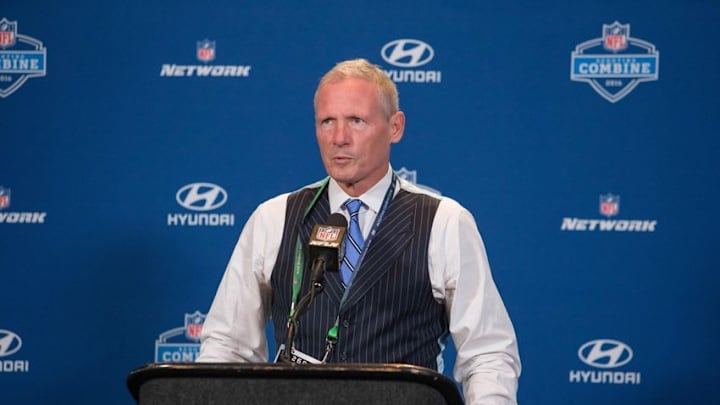A comparison of different analysis who did a 2016 NFL Mock Draft.
In my final 2016 mock nfl draft, I stated that I would compare my mock draft to many others. This included professional draft pundits and less professional ones like my own. The data supports some conclusions which I’ll discuss after I present the data. The mock drafts compared were my own, Charlie “I passed on Julius Peppers” Casserly, Pete Prisco, Daniel Jeremiah, Dane Brugler, Mike Mayock, Eric Edholm, Chris Nicolaou(of Draftbreakdown), Jesse Wyand(a Redskins fan who volunteered to submit a mock draft) and Withthefirstpick’s Jon Dove, Bob Stumpe and Matthew Godin.
So this is much like golf: the lower the score, the better.



One note for the top 10s, a lot of the variance is from Tunsil(everyone had him going in the top 10) and Myles Jack(about half had him going in the top 10). I would say that this counted for 1.5-2 points per mock draft compared.


Conclusions:
-The experts were obviously more accurate with their mock drafts, but not because they had some special information unavailable to everyone else. They missed smaller with their picks and took less chances. Every mock drafter had at least one player which they were off by more than 26 picks with. This supports the conclusion that the inside information that they’re getting from teams, agents and players is more about who generally is seen as first round picks as opposed to what teams are going to draft which players but even then it’s not foolproof. There were 11 picks which absolutely no one got right: Joey Bosa(#3), Eli Apple(#10), Corey Coleman(#15), Keanu Neal(#17), Darron Lee(#20), Will Fuller(#21), William Jackson III(#24), Paxton Lynch(#26), Joshua Garnett(#28), Vernon Butler(#30) and Germain Ifedi(#31). That’s almost a third of the draft! The average variance for each pick was over 9. And even the experts had multiple players in their 1st round Mocks that didn’t go in the first round at all. This shouldn’t be happening if even the experts had some great sources of information about draft intentions.
-Building on the first conclusion, the biggest problem with doing a mock draft is that teams themselves have no idea who they’re going to take outside of the first pick or two. Laremy Tunsil and Myles Jack’s falls were ones that teams didn’t really see coming(certainly Tunsil’s but Jack’s is debatable) and they scrambled draft boards left and right. I won’t name the team or the prospect, but it was my understanding that a team mysteriously took a prospect(not Tunsil or Jack) off their board morning of the first round and no one with the team except for the general manager knew why.
-Teams value prospects much differently than even the most well thought of draft experts do and the teams draft much less on value or perceived value and much more on a ranking that each decision maker does. I say decision maker and not front office because a recent leak of scouting reports from the 2010 draft by the Oakland Raiders’ scouting department shows that just because scouts rate players a certain way doesn’t mean that the decision makers will follow their guidence. For example, every draft pundit had Josh Doctson and Laquon Treadwell rated ahead of Will Fuller but Fuller went ahead of both because the Texans decided that he was worth even dealing up a single draft spot to make sure that they got him. Or Joey Bosa going to the Chargers when no one had any inkling that this was possible. No matter how experienced, smart and plugged in a draftnik is-even someone like Kiper or Mayock-is going to value players much differently than how teams do.
-Outside of the top 10 picks, throwing darts at a list of prospects is probably as accurate as putting in the time and effort to try and figure out who’s going to take whom. In fact, there’s absolutely no reason to spend the time to do a predictive 32 pick long mock draft. The best of the best were off by nearly 6 picks on average from the picks 11-31.
-That said, I’m no longer going to make full 1st round predictive mocks. I don’t feel chastened or incompetent by my performance. I’m more staggered by everyone’s performance and how off that we all were. I’m going to stick to predictive top 10 mocks and first round mocks based on my rankings of the prospects in any one draft class.
